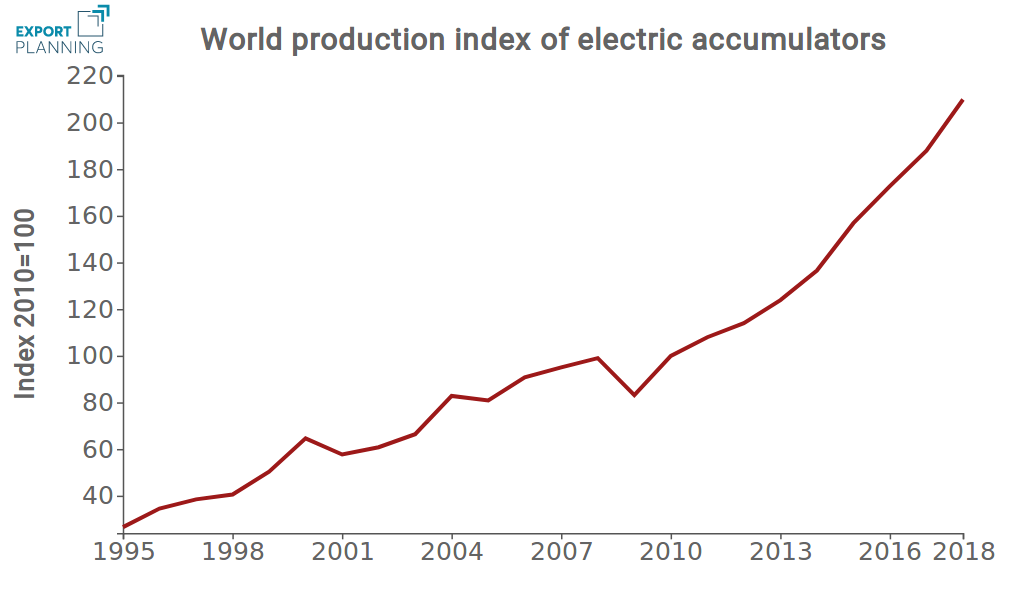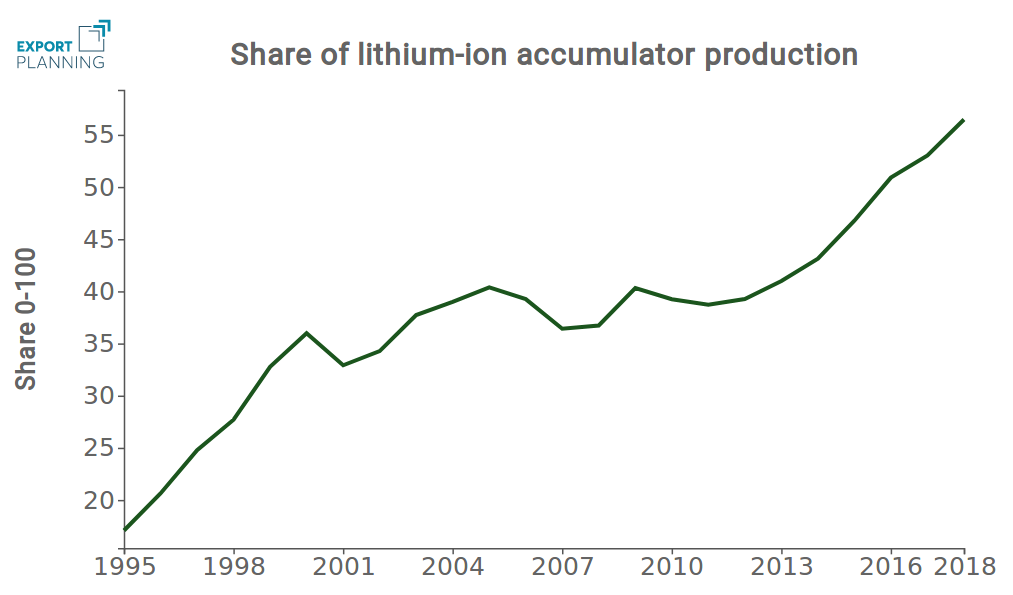The long growth of electric accumulators
Lithium ion technology is dominating the production of electric accumulators
Published by Luigi Bidoia. .
Electronics Global demand International marketingThe growth of portable electric and electronic consumer products and recently of electric cars has determined both a strong process of technological innovation of electric accumulators and a high increase in their production.
The electric accumulator (technically a rechargeable electric battery) is a product that has passed through the last century. The most common accumulator for many years was the lead-acid accumulator, widely used on petrol engine vehicles. Its success over time is due to the very low cost of its inputs, lead and sulfuric acid.
In the second half of the 20th century, due to the increase in the consumption of portable electrical and electronic products, there was an increase in the use of nickel-cadmium accumulators. These allow a greater charge density than lead ones.
Technological research has focused on two parameters: the electric charge density and the reduction of the memory effect, leading to the development of nickel-metal hydride and lithium-ion accumulators. The latter was the most successful accumulator of the last 20 years.
The first below reported graph shows the increase in the world production of electric accumulators and the second the share of production of lithium-ion accumulators on the total world production of accumulators.

|

|
In this decade the world production of electric accumulators has more than doubled, after increasing significantly at the end of the last century and the beginning of the current one.In the last 20 years the production share of lithium accumulators has gone from below 20% to above 50%.
Lead-acid batteries are the most installed accumulators on petrol-powered vehicles. Lithium batteries instead dominate between portable products. Their production is concentrated in the Far East, with China leading, followed at a distance by South Korea and Japan.
The growth of lithium accumulator production has led to a growing lithium demand. In the last 5 years its price has utterly exploded, going from 4-5 dollars per kg (in the form of carbonates and oxides) to the current 12 dollars.
However, the early months of 2019 saw a slowdown in both the world lithium-ion battery trade and the relative stability of lithium prices on commodity markets. So this weak global economic situation is also impacting on these goods characterized by a high growth potential.


